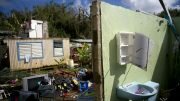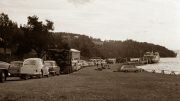This is an overview of the biggest accidents and natural disasters that have occurred in Norway since 1980.
The goal of this article is information and remembrance.
To make it clear, Norway is, by many accounts, a safe country. As with anywhere else, however, accidents and natural disasters do happen.
Before we look into the largest such events of the last 40 years, let’s recap safety in Norway.
Norway is #17 on the Global Peace Index
The 2020 Global Peace Index rankings are:
- Iceland
- New Zealand
- Portugal
- Austria
- Denmark
- Canada
- Singapore
- Czech Republic
- Japan
- Switzerland
- Slovenia
- Ireland
- Australia
- Finland
- Sweden
- Germany
- Norway (tied with Belgium for 17)
- Belgium
- Bhutan
- Malaysia
Indicators used to determine a country’s peacefulness in the GPI include intensity of internal conflict, violent demonstrations, violent crime, political instability, political terror, weapons imports, terrorism impact, deaths from internal conflict, nuclear and heavy weapons, weapons exports, displaced people, neighboring countries relations, external conflicts fought, and deaths from external conflict.
Norway is #11 in the World Risk Index (which deals with natural disasters)
Though the project was stopped in 2017, the United Nations’ World Risk Index studies, among other things, a country’s exposure to key natural hazards – along with how strong the coping mechanisms.
In 2016, it reported the following statistics, starting with the least-risky countries:
- Qatar
- Malta
- Saudi Arabia
- Barbados
- Grenada
- Iceland
- Bahrain
- Kiribati
- United Arab Emirates
- Sweden
- Norway
- Finland
- Singapore
- Egypt
- Israel
- Estonia
- Switzerland
- Luxembourg
- Seychelles
- France
To quote the report:
“A disaster occurs when an extreme natural event hits a vulnerable population. The World Risk Index 2016 shows that the global hotspots for a high disaster risk lie in Oceania, Southeast Asia, Central America, and the Southern Sahel. Thus countries like the Solomon Islands, Papua-New Guinea, and Guinea-Bissau are all very strongly exposed to natural hazards and, owing to their poor economic and social situations, particularly vulnerable.
The example of Australia demonstrates how a low level of vulnerability can lower disaster risk. The country mitigates its exposure, which is mainly to drought, earthquakes, and sea-level rise, and thus attains a strong ranking. However, the example of Japan shows that a low level of vulnerability cannot fully compensate for extreme exposure.
Despite its very low vulnerability, the country is very at-risk in the Index because of its very high exposure, mainly to earthquakes and floods. In countries like Liberia, Zambia, and the Central African Republic, the situation is the reverse of that in Japan. They are rather weakly exposed to natural hazards but very vulnerable. Highly developed countries with a low level of exposure do best in the risk assessment. Saudi Arabia, Malta, and Qatar have the lowest disaster risk.”
Remembering disasters over the last 40 years in Norway
While Norway is a comparatively safe country, accidents and disasters do happen.
This is an overview of the biggest accidents and natural disasters that have occurred in Norway since 1980.
March 27, 1980: Semi-submersible drilling rig “Alexander L. Kielland”‘s platform capsizes. 123 people died.
March 11, 1982: Widerøe Flight 933 crashes into the Barents Sea at Mehamn with no survivors. 15 people died.
March 5, 1986: An avalanche occurs in Vassdalen while soldiers are carrying out work in the area. 16 people died.
May 6, 1988: Widerøe Flight 710 crashes into the mountain of Torghatten in Brønnøy. 36 people died.
15 August 1988: A bus collides with a concrete arch on the way from Hardangervidda into Måbø Valley. 16 people died.
April 7, 1990: A fire breaks out on the ferry ship Scandinavian Star on its way from Norway to Denmark. 159 people died.
August 29, 1996: Vnukovo Airlines Flight 2801 crashes in Operafjellet, Svalbard on the way from Moscow to Longyearbyen. 141 people died.
September 18, 1997: There is a mining accident related to fire in Barentsburg on Svalbard. 23 people died.
November 26, 1999: The high-speed catamaran Sleipner sinks after colliding with a rock north of Haugesund. 16 people died.
January 4, 2000: A train from Trondheim collides with a local train from Hamar on the Røros Line at Åsta. 19 people died.
January 19, 2004: The cargo ship Rocknes capsizes due to shallow water off the coast of Bergen on its way to Germany. 18 people died.
April 29, 2016: CHC Helicopter Service Flight 241 crashes at Turøy in Hordaland on its way from the oil platform Gullfaks B to Bergen. 13 people died.
30 December 2020: A landslide occurs in Gjerdrum. 10 people died.
Source: Norway Today






Be the first to comment on "These are Norway’s biggest accidents and natural disasters in the last 40 years"